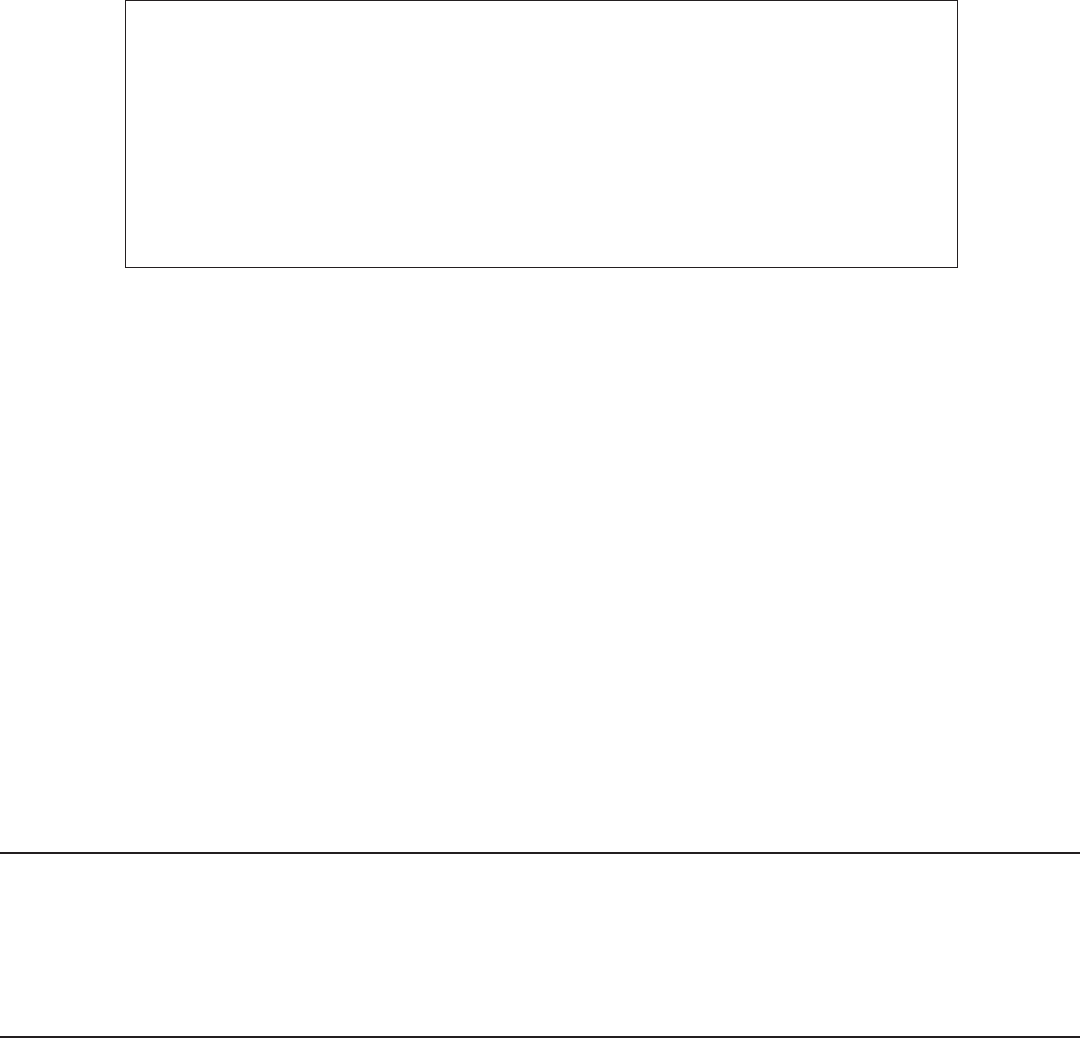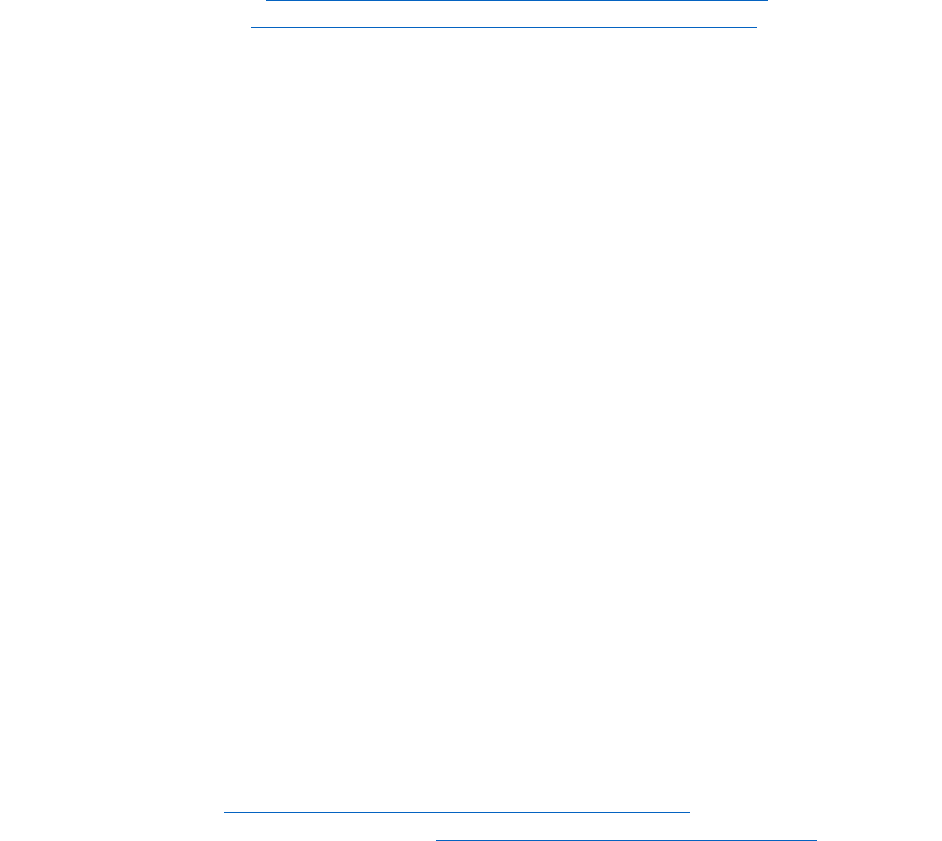
Employment Law Institute – May 2017
SESSION 601
20 Minnesota Employment Laws That You
Might Not Know…But You Should!
Jessica K. Looman
Deputy Commissioner
Minnesota Department of Labor & Industry
Saint Paul

Minnesota CLE’s Copyright Policy
MINNESOTA CLE is Self-Supporting
A not for profit 501(c)3 corporation, Minnesota CLE is entirely self-supporting. It receives no subsidy from State Bar dues or from any
other source. The only source of support is revenue from enrollment fees that registrants pay to attend Minnesota CLE programs and
from amounts paid for Minnesota CLE books, supplements and digital products.
© Copyright 2017
MINNESOTA CONTINUING LEGAL EDUCATION, INC.
ALL RIGHTS RESERVED
Minnesota Continuing Legal Education's publications and programs are intended to provide current and accurate information about
the subject matter covered and are designed to help attorneys maintain their professional competence. Publications are distributed
and oral programs presented with the understanding that Minnesota CLE does not render any legal, accounting or other professional
advice. Attorneys using Minnesota CLE publications or orally conveyed information in dealing with a specific client's or other legal mat-
ter should also research original and fully quoted sources of authority.
Minnesota Continuing Legal Education wants practitioners to make the best use
of these written materials but must also protect its copyright. If you wish to copy
and use our CLE materials, you must first obtain permission from Minnesota CLE.
Call us at 800-759-8840 or 651-227-8266 for more information. If you have any
questions about our policy or want permission to make copies, do not hesitate to
contact Minnesota CLE.
All authorized copies must reflect Minnesota CLE’s notice of copyright.
Table of Contents
I. Workers Compensation Insurance…………………………………...…………………1
II. Minnesota OSHA……………………………………………………………………..….1
III. Recordkeeping……………………………………………………………………...…….2
IV. AWAIR…………………………………………………………………………..……….2
V. Workplace Safety Consultation ………………………………………………..……….4
VI. Child Labor Laws………………………………………………………………….…….4
VII. Paycheck Deductions……………………………………………………………….……5
VIII. Mandatory Workplace Posters…………………………………………………….……5
IX. Minnesota Fair Labor Standards………………………………………………….……6
X. Payroll…………………………………………………………………………………….7
XI. Minimum Wage…………………………………………………………………………..7
XII. Parental Leave…………………………………………………………………...……….8
XIII. Overtime……………………………………………………………………………….…9
XIV. Work Hours and Breaks……………………………………………………………….10
XV. Independent Contractors………………………………………………………………11
XVI. Pregnant Employees……………………………………………………………………12
XVII. Nursing Mothers………………………………………………………………………..13
XVIII. Minnesota’s Sick and Safe Leave……...………………………………………………13
XIX. Wage Disclosure………………………………………………………………………...14
XX. Final Pay………………………………………………………………………………...14

1
The Minnesota Department of Labor and Industry (DLI) oversees the states’ apprenticeship,
construction codes and licensing, occupational safety and health, wage and hour standards, and
workers compensation programs.
The DLI mission is to ensure Minnesota’s work and living environments are equitable, healthy
and safe.
1. EMPLOYERS NEED TO HAVE WORKERS COMPENSATION INSURANCE.
Every employer, except the state and its municipal subdivisions, is required to have workers’
compensation insurance. The insurance must be provided by an insurance carrier licensed in
Minnesota or the employer may be self-insured with permission from the commissioner of the
Minnesota Department of Commerce. (Minnesota Statutes §176.181).
Definition of Employer
For purposes of workers’ compensation law, an employer is generally defined as an individual or
business that hires another individual to perform services. (Minnesota Statutes §176.011).
Definition of Employee
An employee is any individual who performs services for another, for hire, including minors,
part-time workers and workers who are not citizens. There are some exceptions from coverage
including farmers. (Minnesota Statutes §176.011).
Office of the Ombudsman
The Office of Workers' Compensation Ombudsman is a separate entity within the Department of
Labor and Industry. Its purpose is to inform, assist and empower injured workers and small
businesses having difficulty navigating the workers' compensation system, to help resolve
problems encountered in the system.
Resources:
Workers Compensation Coverage Fact Sheet: http://www.dli.mn.gov/WC/Pdf/fact_sheet_scf.pdf
Workers Compensation Coverage Video: http://www.dli.mn.gov/WC/Scf_Coverage_Video.asp
Office of the Workers Compensation Ombudsman http://www.dli.mn.gov/WC/Ombudsman.asp
2. WHO IS MOST LIKELY TO GET INSPECTED BY OSHA?
Minnesota OSHA (MNOSHA) Compliance conducts more than 2,500 enforcement inspections
each year. With approximately 180,000 worksites in Minnesota on any given day, how can you
figure out if your company is likely to be inspected?
MNOSHA Compliance will give priority to an inspection if:
someone sees or reports an imminent danger;
an employee has died at work;

2
more than three employees have been hospitalized following a workplace incident;
an employee has complained to MNOSHA about a safety or health hazard; or
the company is in an industry with high injury, illness and workers' compensation rates.
Industries with high injury, illness and workers' compensation rates include:
manufacturing;
construction, including demolition, bridge work, fall hazards and roofing work;
occupations where employees might suffer amputations during work;
worksites where employees are exposed to combustible dust, lead, silica, isocyanates or
hexavalent chromium;
health care;
trenching and excavation work;
window washing;
grain handling; and
meatpacking facilities.
Resources:
Minnesota OSHA standards and rules: http://www.dli.mn.gov/OSHA/Standards.asp
Minnesota OSHA Fact Sheet: http://www.dli.mn.gov/OSHA/FactSheets.asp
Federal OSHA Fact: https://www.osha.gov/
Recordkeeping: http://www.dli.mn.gov/OSHA/Recordkeeping.asp
Other MNOSHA Compliance Resources: http://www.dli.mn.gov/OSHA/LinkResources.asp
3. EMPLOYERS NEED TO KEEP WORKPLACE SAFETY RECORDS AND HAVE A
WRITTEN SAFETY PLAN AND LABOR MANAGEMENT SAFETY COMMITTEE
Workplace Injury Record Keeping
Employers with more than 10 employees are required to keep a record of serious work-related
injuries and illnesses. Minnesota follows the federal OSHA recordkeeping requirements, but it is
important to note that OSHA log cases are not the same as Minnesota workers' compensation
claims. Some injuries and illnesses will not be included in both systems. DLI provides training
on how to keep OSHA records.
AWAIR Programs
Many employers are required to develop and use a formal safety and health program, commonly
known as an A Workplace Accident and Injury Reduction (AWAIR) program. (See Minnesota
Statutes §182.653).
A written AWAIR plan includes:
1. How managers, supervisors and employees are responsible for implementing the safety
program and how continued participation of management will be established, measured
and maintained;
2. The methods used to identify, analyze and control new or existing hazards, conditions
and operations;

3
3. How the plan will be communicated to all affected employees so they are informed of
work-related hazards and controls;
4. How workplace accidents will be investigated and corrective action implemented;
5. How safe work practices and rules will be enforced.
How do I know if my company needs an AWAIR plan?
Employers required to have an AWAIR plan are listed in Minnesota Rule 5208.1500. Employers
in the following industries are some of the employers required to have an AWAIR plan:
Accommodation
Arts
Agriculture
Construction
Entertainment
Fishing and hunting
Forestry
Manufacturing
Police and Fire Protection
Retailers
Transportation
Warehouses
Wholesalers
Labor-Management Safety Committees
All employers with more than 25 employees are required to establish a joint labor-management
safety and health committee for their workplace. Some employers with fewer than 25 employees
are also required to have a labor management safety committee if they have had a certain number
of workplace injuries. (See Minnesota Statutes §182.676)
Who is on a safety committee?
The number of employee representatives on a safety and health committee shall equal or exceed
the number of management representatives on the committee. If there is a collective bargaining
agreement, the unions will choose the employee members. If there is no union, the employee
representatives shall be selected by their peers. (See Minnesota Rules 5208.0030)
What does a safety committee do?
A safety committee establishes a system to obtain safety-related suggestions, reports of hazards,
and other information from all persons involved in the operations of the workplace. The safety
and health committee reviews and makes recommendations about the employer's occupational
safety and health program and occupational safety and health records. The safety and health
committee reviews incidents resulting in work-related deaths, injuries, and illnesses and makes
recommendations to prevent further occurrences. The committee's review of these incidents may
be limited to a review of a report made by others who have investigated the incident. The
employer shall provide materials and facilities to the safety and health committee to enable it to
perform its duties. All safety and health committee recommendations or reports made to the
employer shall be kept by the employer for two years and shall be provided to the commissioner
of the Department of Labor and Industry on the commissioner's request. (Minnesota Rules
5208.0050)
Resources:
OSHA Recordkeeping Requirements: http://www.dli.mn.gov/OSHA/Recordkeeping.asp
MNOSHA Compliance AWAIR Program: http://www.dli.mn.gov/OSHA/Awair.asp
MNOSHA Labor Management Committees: http://www.dli.mn.gov/wsc/LMSC.asp

4
4. EMPLOYERS CAN USE FREE DLI WORKPLACE SAFETY CONSULTATION
SERVICES
The Department of Labor and Industry provides free workplace safety consultation services.
Employers can find out about potential hazards at their worksites, improve their safety
management systems and apply for a safety grant of up to $10,000 to abate safety hazards. This
program targets small, high-hazard businesses. It is completely separate from the OSHA
Compliance inspection activities. No citations are issued as part of a consultation visit.
Employers receiving this service must commit themselves to correcting serious job safety and
health hazards in a timely manner.
Resources:
Workplace Safety Consultation Fact Sheet: http://www.dli.mn.gov/WSC/PDF/brochure0912.pdf
5. CHILDREN CANNOT OPERATE SNOW BLOWERS.
Minnesota’s Child Labor Act (Minnesota Statutes §181A) prescribes when children can work
and the types of work that children can do. Young workers are some of the most vulnerable to
workplace injuries and illnesses. There are both federal and Minnesota child labor laws that
restrict minors from working in certain hazardous jobs or conditions.
Unless the minor is employed by a business that is solely owned and daily supervised by their
own parent:
Minors younger than 18 may not be employed in construction, logging, in sawmills or
paper mills. They may not serve liquor. They may not be employed to drive boats, or
use power driven machinery. They cannot assemble amusement rides, work with
explosives, or window washing 12 feet above the ground. (See Minnesota Rules
5200.0910)
Minors younger than 16 may not be employed to work with machinery such as power-
driven snow blowers and other lawn and garden equipment, meat slicers or bakery
equipment. Other prohibited work for minors younger than 16 includes working with
laundry, rug cleaning or dry cleaning equipment; being in contact with a carwash on a
mechanized conveyor line; or doing welding of any kind. (Minnesota Rules 5200.0920)
Resources:
Child Labor Hours of Work: https://www.dli.mn.gov/LS/Pdf/youthrules.pdf
Child Labor Brochure: http://www.dli.mn.gov/LS/Pdf/childlbr.pdf
Teen Workers: http://www.dli.mn.gov/LS/TeenWorkers.asp
Federal child labor information: www.dol.gov/whd/childlabor.htm.

5
6. EMPLOYERS CAN CHARGE EMPLOYEES FOR UNIFORMS, BUT MUST PAY
THEM BACK.
Generally, an employer may not deduct from wages for breakages, cash shortages, tools or
uniforms. Some exceptions to this rule are allowed. (See Minnesota Statutes 181.06, 181.79 and
177.24, subdivisions 4 and 5.)
An employer may deduct money from wages if:
the employee is covered by a union collective bargaining agreement that allows for
deductions;
the employee is a commissioned salesperson with rules regarding deductions for
performance issues;
before the employees made a purchase or took out a loan from the employer the
employee voluntarily agreed in writing to have the cost of that loan or purchase taken out
of your wages; or
there is a court order requiring that deductions be taken.
An employer cannot deduct from wages for broken equipment, lost money or other employer
losses unless:
after the loss occurs, the employee voluntarily gives the employer written authorization to
deduct from wages; or
the employees has been found liable for the loss by a court.
An employer may deduct up to $50 total from wages for:
purchased or rented uniforms required for the job;
purchased or rented equipment used to do the job,
consumable supplies used to do the job; and
travel costs incurred for work.
The $50 deducted from wages must be paid back to you when the employee leaves employment.
Resources:
Paychecks and Deductions: http://www.dli.mn.gov/LS/PaycheckDeduc.asp
7. WORKPLACE POSTERS ARE FREE
Minnesota law requires employers to display state mandated posters in a physical location where
employees can easily see them. The posters provide safety, wage and age-discrimination
information.
What are the mandatory posters in Minnesota?
1. Age discrimination
2. Minimum wage and overtime
3. Safety and health on the job
4. Unemployed?
5. Workers' compensation

6
Obtaining posters
You can obtain free mandatory workplace posters five ways:
1. Print the posters from the DLI Web page as PDFs.
2. Order free, mandatory workplace posters online.
3. Call (651) 284-5042 to place an order by phone; outside the Twin Cities metropolitan
area, call 1-800-342-5354.
4. Email a request to dli.post@state.mn.us that includes a business name, a contact name,
mailing address and phone number, as well as the number of poster packets needed.
5. Send a request by mail to: CRT Poster Request, Minnesota Department of Labor and
Industry, 443 Lafayette Road N., St. Paul, MN 55155.
Additional mandatory posters
Some U.S. government agencies have mandatory poster requirements.
Resources:
Posters: http://www.dli.mn.gov/LS/Posters.asp
8. EMPLOYERS HAVE THE BURDEN OF PROVING THAT WAGES HAVE BEEN
PAID.
The Minnesota Fair Labor Standards Act (MFLSA) sets recordkeeping requirements for all
covered employees. Every employer must keep certain records about each worker who is entitled
to minimum wage and overtime pay under MFLSA. The Act requires no particular format for the
records. It does require that the records include certain identifying information about the
employee and data about hours worked and the wages earned. The law requires that this
information be kept for a period of not less than three years.
Each time an employee is paid, the employer must provide a statement listing all deductions,
such as taxes, from earnings (see Minnesota Statutes 181.032). The earnings statement must also
include:
the employee's name;
the hourly rate of pay (if applicable);
the number of hours worked in the pay period;
the total gross earnings for the pay period;
the total net earnings after all deductions are made;
the date the pay period ends; and
the legal name of the employer.
Employers are required to keep and maintain employment records and to produce records for
inspection by the state. If an employer does not have sufficient records to prove that the wages
have been paid, DLI can use whatever information it does have to determine employer liability.
(See Minnesota Statues 177.27)
Resources:
MDLSA Recordkeeping: http://www.dli.mn.gov/ls/Pdf/recordkeeping.pdf

7
9. EMPLOYEES MUST BE PAID REGULARLY, NOT LESS THAN EVERY 31 DAYS,
AND IN A FORM THAT THEY CHOOSE.
Forms of payment
Employees cannot be required to accept payment of wages via direct deposit or payroll card. If
an employee opts out of using direct deposit or a payroll card, the employer must provide
payment of wages via check or cash. (Minnesota Statues §177.23, subd. 4.) The employee is
required to put this request in writing.
If any company issues or plans to issue payroll cards as a method of paying employees' wages,
they are required to file notice of doing business with the commissioner of the Department of
Labor and Industry. (See Minnesota Statute § 177.255)
When wages must be paid
Every employer must pay all wages earned at least once every 31 days on a regular payday. The
pay day must be designated in advance by the employer. (See Minnesota Statues §181.101)
Employees working in construction or forestry must be paid every 15 days. (See Minnesota
Statues §181.10)
Resources:
Payroll Cards: http://www.dli.mn.gov/ls/PayrollCards.asp
10. MINNESOTA MINIMUM WAGE APPLIES TO WORKERS IN MINNESOTA.
The state minimum wage is higher than the federal minimum wage, so employees who are
covered by both laws must be paid the higher state minimum wage. Minimum wage rates apply
to all hours worked, whether part time or full time. Employees must be paid at least the current
minimum-wage rate, no matter how they are paid.
Exempt employees
For a complete list of exempt employees see Minnesota Statutes 177.23, subd. 7.
A partial list of exempt employees includes: bona fide executive, administrative or
professional workers; babysitters; volunteers of nonprofit organizations; and employees
subject to the provisions of the U.S. Department of Transportation (drivers, drivers'
helpers, mechanics and loaders).
Under Minnesota Statutes 177.28, the Department of Labor and Industry is authorized to
issue a permit to a disabled worker (performance-limited employee) unable to earn the
state minimum-wage, to work at a wage commensurate with his or her ability. View the
Disabled-worker employment information guide.
Tip credit
No employer may take a tip credit against minimum wages in Minnesota.
An employee must be paid at least that minimum wage per hour plus any tips the
employee might earn.

8
Large and Small Employers
In Minnesota, the minimum wage owed to employees is generally based on the size of the
employer and the age of the employee. An enterprise with an annual gross revenue of $500,000
or more is both required to comply with the Federal Fair Labor Standards Act and pay the higher
of Minnesota’s minimum wage rate. Annual gross revenues are determined by the past four
quarterly tax estimates or previous year audit statement, excluding excise taxes that are listed
separately. (See Minnesota Statute §177.24)
Currently, the large employer minimum wage is $9.50 per hour. Small employers have annual
gross revenues of less than $500,000 and must pay at least $7.75 per hour. All minimum wage
rates will be adjusted for inflation annually starting on January 1, 2018.
Resources:
Minimum wage fact sheet: http://www.dli.mn.gov/ls/Pdf/minwage_er_rates.pdf
Employer size fact sheet: http://www.dli.mn.gov/LS/Pdf/minwage_er_size.pdf
11. IN MINNESOTA, PARENTAL LEAVE IS 12 WEEKS AND 16 HOURS.
Pregnancy and Parental Leave
Under the Women’s Economic Security Act, Pregnancy and Parental Leave Law (See Minnesota
Statues §181.941) employees may take up to 12 weeks of unpaid leave upon the birth or
adoption of their child when:
they work for a company with 21 or more employees;
they worked at least half time for 12 months; and
they have been with the company for at least 12 months.
When does the parental leave start?
The leave must be taken within 12 months of the birth or adoption.
Employees must request the leave from their employer.
Employees can choose when the leave will begin.
Employers can adopt reasonable policies about when requests for leave must be made.
Minnesota’s pregnancy and parental leave may run concurrently with federal Family Medical
Leave (FMLA) when the FMLA leave is taken for the same purpose.
Are there other parental leave provisions?
Every employee is entitled to take up to 16 hours unpaid leave a year to attend their children's
school conferences, classroom activities, child care or other early childhood program. Employees
may use paid vacation time (see Minnesota Statutes §181.9412).
Resources:
Parental Leave Guide: http://www.dli.mn.gov/ls/Pdf/parental_leave.pdf
Labor Standards frequently asked questions: http://www.dli.mn.gov/ls/FaqHours.asp

9
12. MINNESOTA’S OVERTIME LAW REQUIRES TIME AND A HALF AFTER 48
HOURS.
The Minnesota Fair Labor Standards Act requires all employers, regardless of gross annual
revenue, to pay overtime for all hours worked in excess of 48 hours in a seven day period.
Paying a worker a salary does not make them exempt from overtime. Overtime pay must be at
least one-and-one-half times the employee's regular rate of pay. This is calculated by dividing the
total pay in any work week by the total number of hours worked in that week. (See Minnesota
Statues §177.25)
Who Is Exempt from Minnesota Overtime Law?
Some employees are exempt from Minnesota’s overtime law. (See Minnesota Statutes §177.23,
subdivision 7.) The following is a partial list:
executive, administrative or professional employees who meet the salary and duty
requirements of the department’s rules; (See Minnesota Rules 5200.0180-5200.0211)
an outside salesperson; (Minnesota Rules 5200.0220)
a salesperson, parts person or mechanic for a vehicle dealership who sells or services
automobiles, trailers, trucks or farm implements, and is paid on a commission or
incentive basis, and is employed by a dealer selling to the consumer; and
an agricultural worker paid a salary of at least $696 a week for large employers grossing
$500,000 a year or more, or $569.62 a week for small employers grossing less than
$500,000 a year.
Do you have to pay overtime in a week with a paid holiday?
Overtime is based on actual hours worked and does not include holidays, vacation leave or sick
leave days used.
Can an employer require an employee to work overtime?
The employer has the authority to establish the work schedule and determine the hours to be
worked. There are no limits on the overtime hours the employer can schedule. Employees who
refuse to work the scheduled hours may be terminated. Advance notice by an employer of the
change in hours is not required.
What is a workweek?
A workweek is defined as a fixed and regularly recurring period of 168 hours, seven consecutive
24 hour periods. The workweek may not be changed if the change is intended to avoid the
payment of overtime. (See Minnesota Rules 5200.0170).
Resources:
Overtime Laws: http://www.dli.mn.gov/ls/Pdf/overtime.pdf
13. IN MINNESOTA, TRAINING AND WAITING TIME IS PAID TIME.
Regardless of federal law requirements, Minnesota requires that employees be paid for all hours
worked as defined in Minnesota Rules, 5200.0120. Specifically, hours worked include training
time, call time, cleaning time, waiting time, or any other time when the employee must be either

10
on the premises of the employer or involved in the performance of duties in connection with his
or her employment or must remain on the premises until work is prepared or available.
(Minnesota Rules, 5200.0120, subpart 1)
Rest breaks and meals.
Rest periods of less than 20 minutes must be paid. Bona fide meal periods are not hours worked.
Bona fide meal periods do not include rest periods such as coffee breaks or time for snacks. The
employee must be completely relieved from duty for the purpose of eating regular meals. Thirty
minutes or more is ordinarily long enough for a bona fide meal period. A shorter period may be
adequate under special conditions. The employee is not completely relieved from duty if required
to perform any duties, whether active or inactive, while eating. It is not necessary that an
employee be permitted to leave the premises, if the employee is otherwise completely freed from
duties during the meal period. If the meal period is frequently interrupted by calls to duty, the
employee is not relieved of all duties and the meal periods must be considered as hours worked.
(Minnesota Rules, 5200.0120, subparts 1 and 4)
On-call time.
An employee who is required to remain on the employer's premises or so close to the premises
that the employee cannot use the time effectively for the employee's own purposes is working
while on call. An employee who is not required to remain on or near the employer's premises,
but is merely required to leave word at the employee's home or with company officials where the
employee may be reached is not working while on call. (Minnesota Rules, 5200.0120, subpart 2)
Off duty.
Periods when the employee is completely relieved of duty and free to leave the premises for a
definite period of time, and the period is long enough for the employee to use for the employee's
own purposes, are not hours worked. (Minnesota Rules, 5200.0120, subpart 3)
Resources:
Work hours FAQ: http://www.dli.mn.gov/ls/FaqHours.asp
14. AN EMPLOYER IS NOT REQUIRED TO PROVIDE REGULAR REST BREAKS
Minnesota employers are not required to provide employees regular rest breaks.
When breaks are required
1. Every four hours, employees must be allowed time to use the nearest restroom (See
Minnesota Statutes §177.253).
2. Every eight or more consecutive hours, employees must be allowed sufficient time to eat
a meal (See Minnesota Statutes §177.254).
3. An employee must be provided reasonable unpaid break time to express breast milk for
her child. Breaks already provided may fulfill this requirement. Employers are not
required to provide this time if doing so would seriously disrupt operations. The
employer must also make reasonable efforts to provide a private area with an electrical
outlet for a nursing mother to express her milk, other than a bathroom (See Minnesota
Statutes §181.939).

11
Resources:
Work hours FAQ: http://www.dli.mn.gov/ls/FaqHours.asp
15. MOST WORKERS ARE NOT INDEPENDENT CONTRACTORS.
In Minnesota, the general presumption is that a worker is an employee unless they are a bona
fide independent contractor. Independent contractor status is determined differently for different
industries and for different purposes.
Minimum wage and overtime.
All workers employed by an employer are covered by the Minnesota Fair Labor Standards Act
unless the worker is specifically exempt from the definition of employee (Minnesota Statutes
§177.23, Subd. 7). A bona fide independent contractor is not an employee. To determine
whether a specific worker is an independent contractor, the state must review the thirteen
indicators of control of method and manner of performance outlined in Minnesota Rules
5224.0330 and an additional eight factors outlined in Minnesota Rules 5224.0340. Control of
the method and manner of performance is not the most important factor and all factors must be
weighed to determine whether the worker is economically dependent upon the business for
which the worker provides services. (Minnesota Rules 5200.0221).
Construction Industry
By law, an unregistered or unlicensed "subcontractor" is presumed to be an employee of any
contractor that hires them. An individual or business entity that performs commercial or
residential building construction or improvement services must register with DLI unless they:
have a current license, certificate or registration issued by DLI;
are an employee of a business performing construction services; or
hold a current residential building contractor or remodeler certificate of exemption
issued by DLI; or
are excluded from registration requirements under Minnesota Statutes §326B.701
The hiring contractor can rebut this presumption if they can prove that the relationship between
them and the subcontractor complies with all nine factors found in Minnesota Statutes §181.723,
subd. 4. Hiring an unregistered individual is a violation of law, though the monetary penalty is
forgiven for the first violation.
Even if subcontractors are registered or licensed the relationship with them must meet the nine
factor test or they will be deemed to be employees of the hiring contractor even if they operate as
a business entity (corporation or LLC) and maintain their own liability and workers’
compensation insurance.
Unemployment insurance
The Minnesota Department of Employment and Economic Development (DEED) uses a
common law factor analysis similar to the Internal Revenue Service to determine the status of a
worker. (See Minnesota Rules 3315.0555 and Minnesota Statute §268.035 Subd. 25b)
Minnesota's common law factors have been defined by the Minnesota court system.

12
Resources:
Contractor Registration FAQs: http://www.dli.mn.gov/CCLD/PDF/registrationFAQ.pdf
Nine factor test fact sheet: http://www.dli.mn.gov/CCLD/Register_nine_factors.asp
Workers' compensation liability of contractors fact sheet:
http://www.dli.mn.gov/WC/Pdf/infosheet_contractor_liability.pdf
Unemployment insurance fact sheet: http://www.uimn.org/employers/wages-taxes/independent-
contractors/index.jsp
16. EMPLOYERS MUST ACCOMMODATE PREGNANT EMPLOYEES
Pregnancy Accommodation (Minnesota Statutes §181.9414)
The Pregnancy Accommodation Act requires that employers provide reasonable accommodation
to employees with health conditions related to pregnancy or childbirth.
Eligibility for pregnancy accommodation protection under the Women’s Economic Security Act
is limited to employees who:
work for employers that employ 21 or more employees at one site;
have worked for that employer for at least 12 months; and
have worked for at least half-time during the previous 12 months.
However, discrimination because of pregnancy is prohibited under the Minnesota Human Rights
Act regardless of the employer's size. Eligible pregnant employees are entitled to three types of
accommodations without having to provide a note from a doctor or otherwise prove that the
accommodation is necessary. An employer may not deny an automatic accommodation.
These automatic pregnancy accommodations are:
1. More frequent restroom breaks or food and water breaks;
2. Seating arrangements; and
3. A limit on lifting more than 20 pounds.
Employees may request the employer provide other reasonable accommodations. The employer
and employee must engage in an interactive process with respect to an employee’s request. An
employer may deny requested accommodations if they can show that it would cause the
employer an undue hardship. The employer cannot require an employee to take leave or accept
pregnancy accommodations that the employee does not want.
Resources:
Pregnancy and Nursing Mothers Fact Sheet:
http://www.dli.mn.gov/ls/Pdf/pregnancy_nursing.pdf

13
17. EMPLOYERS MUST ACCOMMODATE NURSING MOTHERS
Nursing Mothers’ Accommodation (Minnesota Statutes §181.939)
The Nursing Mothers’ Accommodations law requires employers to provide both a reasonable
amount of time and suitable space for an employee to express breast milk.
An employer of any size must provide reasonable, unpaid break time each day to any employee
who needs to express milk for her child. However, the employer is not required to provide the
break time if doing so would unduly disrupt the employer's operations.
An employer of any size must make a reasonable effort to provide a space to express milk that:
is in close proximity to the work area;
is a room other than a bathroom or toilet stall;
is shielded from view;
is free from intrusion from coworkers and the public; and
includes access to an electrical outlet.
DLI must conduct an expedited investigation of nursing mother accommodation complaints.
DLI is required to contact the employer within 2 business days and investigate the complaint
within 10 days. Therefore, DLI:
contacts the employer the same day we receive the complaint;
schedules an onsite visit or requires information be submitted within 5 days; and
gains compliance or issues an Order to Comply within 10 days.
Resources:
Nursing Mothers Fact Sheet: http://www.dli.mn.gov/ls/Pdf/pregnancy_nursing.pdf
18. IF EMPLOYERS PROVIDE EMPLOYEE’S SICK LEAVE, THEY MUST ALLOW
THE EMPLOYEE TO USE IT FOR OTHER STATUTORY PURPOSES.
Minnesota’s Sick and Safe Leave law (See Minnesota Statute §181.9413) requires that if an
employer provides paid sick leave benefits to its employees, it must allow employees to use the
paid sick leave benefits to care for a sick family member. The law also allows employees to use
paid sick leave to receive assistance or provide assistance to a family member related to sexual
assault, domestic abuse or stalking.
Eligible family members
The employer must allow for a reasonable period of time as may be necessary to care for the
employee's family member. Family member means a child, adult child, spouse, sibling, parent,
mother-in-law, father-in-law, grandchild, grandparent or step-parent. "Child" includes a
biological child, step-child, foster child or adopted child. An employer may limit the use of sick
and safe leave benefits for family members to no more than 160 hours in any 12-month period.
However, the employer cannot limit the use of sick and safe leave benefits for absences due to an
illness of, or injury to, the employee's minor child.

14
Resources:
Sick and Safe Leave Fact Sheet: http://www.dli.mn.gov/ls/Pdf/sick_leave.pdf
19. AN EMPLOYER MUST PROVIDE AN EMPLOYEE THEIR PERSONNEL FILE
AND ALLOW EMPLOYEES TO DISCUSS THEIR OWN WAGES.
Personnel File
Minnesota employers are required to provide employees with access to their personnel record
upon written request. A current employee is entitled to review his or her personnel record once
every six months. A former employee may either request to review his or her personnel file once
a year or obtain a copy of his or her personnel file free of charge once a year for as long as the
record is maintained. (See Minnesota Statutes §181.961.)
Wage Disclosure
The Wage Disclosure Protection Act (Minnesota Statues §181.172) prohibits employers from
requiring employees not to disclose their own wages or conditions of employment. It also
prohibits employers from requiring employees to sign a waiver that purports to deny the right to
disclose their wages. Employers cannot take adverse employment action against employees who
disclose their own wages or discuss another employee’s wages that were voluntarily disclosed by
that employee.
Employers that have an employee handbook are required to include notice to their employees of
their rights and remedies under the wage disclosure law.
DLI has provided sample notice language on its website to assist employers:
Sample Notice Language: Notice to employees -- Under the Minnesota Wage
Disclosure Protection law, you have the right to tell any person the amount of
your own wages. Your employer cannot retaliate against you for disclosing your
own wages. Your remedies under the Wage Disclosure Protection law are to bring
a civil action against your employer and/or file a complaint with the Minnesota
Department of Labor and Industry at (651) 284-5070 or 1-800-342-5354.
Resources:
Wage Disclosure Fact Sheet: http://www.dli.mn.gov/LS/FaqWageDisclosure.asp
20. OBLIGATIONS OF EMPLOYERS WHEN AN EMPLOYEE QUITS OR IS
TERMINATED.
Under Minnesota law, no notice of separation is required by either party, upon separation of an
employee for any reason. Courtesy and time to collect accrued benefits are reasons why notice is
often given. However, at separation, all wages are owed at a rate required by law or contract
whichever is greater.

15
Voluntary Separation
An employer must pay all final wages on the next regular payday or within 20 days, whichever is
sooner, after an employee resigns. However, if the employee handled money or property for the
employer, the employer may take 10 calendar-days to audit its records before issuing the final
paycheck. (See Minnesota Statutes §181.14)
Discharge
An employer must give a truthful reason why an employee was terminated, if requested in
writing by the employee. This request must be made in writing by the employee within 15
working days of termination. The employer has 10 working days from receipt of the request to
give a truthful reason in writing for the termination. (See Minnesota Statutes §181.933).
You must make a written demand to your employer for all wages. Under Minnesota Statutes §
181.13, all wages are due and payable upon written demand of the discharged employee. The
employee is entitled to receive all wages within 24 hours of the demand and an employer can be
charged up to 15 additional days’ pay for each day that the wages are not paid.
Resources:
Final Pay Fact Sheet: http://www.dli.mn.gov/ls/Pdf/wage_claim.pdf
